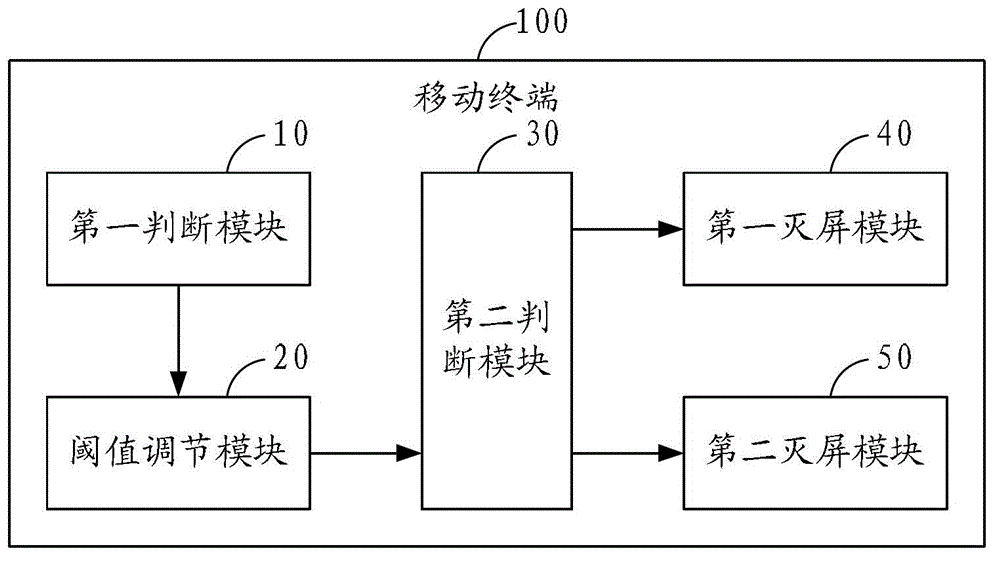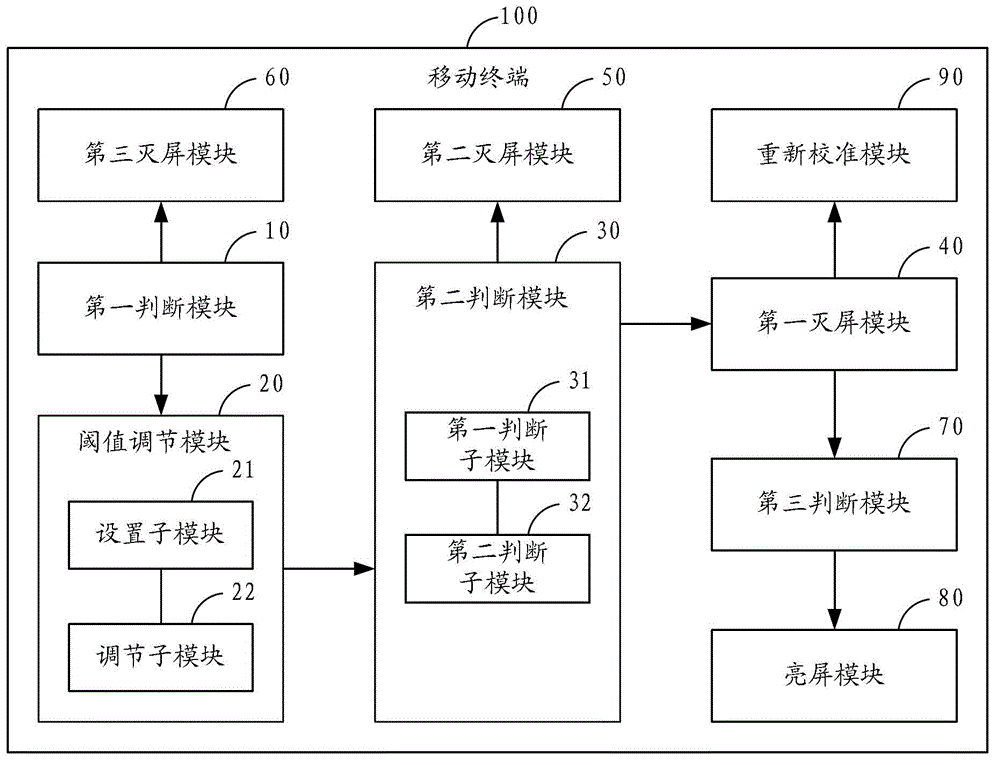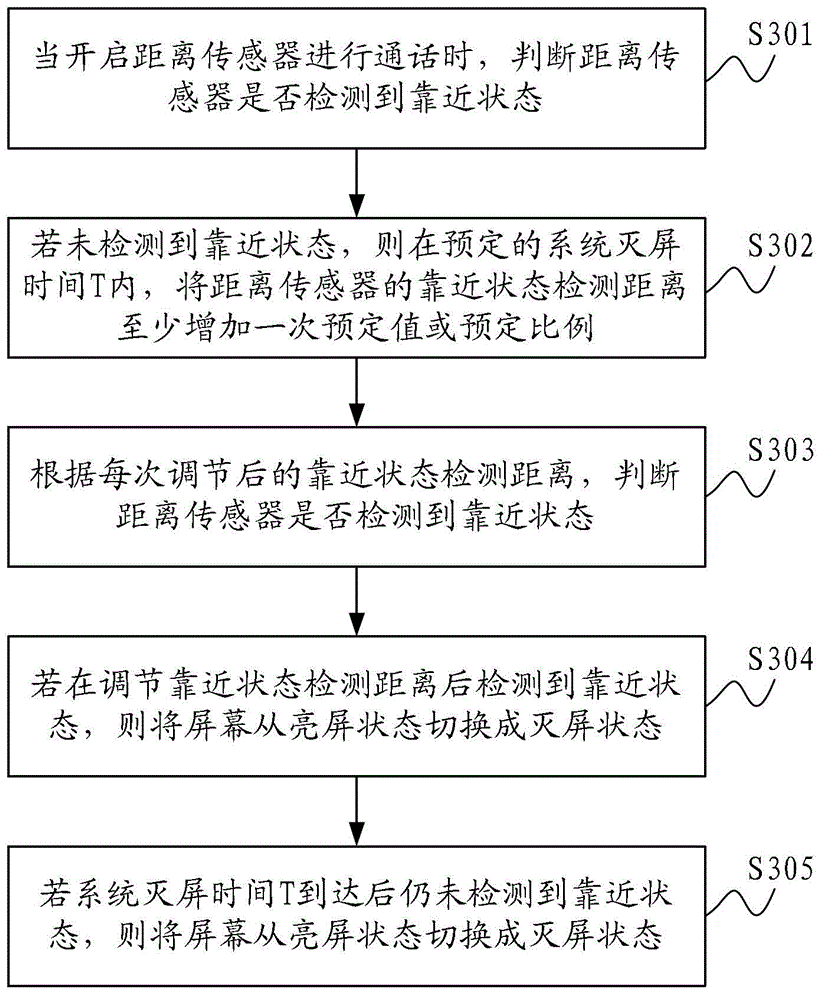Method for dynamically adjusting threshold of distance sensor, and mobile terminal
A distance sensor and threshold technology, which is applied in the field of dynamic adjustment of distance sensor thresholds, can solve problems such as inconvenience in actual use, and achieve the effect of convenient use.
- Summary
- Abstract
- Description
- Claims
- Application Information
AI Technical Summary
Problems solved by technology
Method used
Image
Examples
Embodiment Construction
[0050] In order to make the object, technical solution and advantages of the present invention clearer, the present invention will be further described in detail below in conjunction with the accompanying drawings and embodiments. It should be understood that the specific embodiments described here are only used to explain the present invention, not to limit the present invention.
[0051] figure 1 It is a schematic structural diagram of a mobile terminal of the present invention, the mobile terminal 100 can be a mobile phone, a PDA (Personal Digital Assistant, a personal digital assistant), a tablet computer, etc., and the mobile terminal 100 includes a first judgment module 10 and a threshold adjustment module 20 , the second judging module 30, the first off-screen module 40 and the second off-screen module 50, wherein:
[0052]The first judging module 10 is used for judging whether the distance sensor detects an approaching state when the distance sensor is turned on for a...
PUM
 Login to View More
Login to View More Abstract
Description
Claims
Application Information
 Login to View More
Login to View More - R&D
- Intellectual Property
- Life Sciences
- Materials
- Tech Scout
- Unparalleled Data Quality
- Higher Quality Content
- 60% Fewer Hallucinations
Browse by: Latest US Patents, China's latest patents, Technical Efficacy Thesaurus, Application Domain, Technology Topic, Popular Technical Reports.
© 2025 PatSnap. All rights reserved.Legal|Privacy policy|Modern Slavery Act Transparency Statement|Sitemap|About US| Contact US: help@patsnap.com



